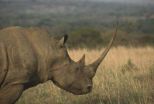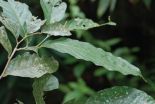(Press-News.org) Cold Spring Harbor, NY – Fear is primal. In the wild, it serves as a protective mechanism, allowing animals to avoid predators or other perceived threats. For humans, fear is much more complex. A normal amount keeps us safe from danger. But in extreme cases, like post-traumatic stress disorder (PTSD), too much fear can prevent people from living healthy, productive lives. Researchers are actively working to understand how the brain translates fear into action. Today, scientists at Cold Spring Harbor Laboratory (CSHL) announce the discovery of a new neural circuit in the brain that directly links the site of fear memory with an area of the brainstem that controls behavior.
How does the brain convert an emotion into a behavioral response? For years, researchers have known that fear memories are learned and stored in a small structure in the brain known as the amygdala. Any disturbing event activates neurons in the lateral and then central portions of the amygdala. The signals are then communicated internally, passing from one group of neurons to the next. From there, they reach neurons in the brainstem, the action center for fear responses.
Last year, CSHL Associate Professor Bo Li and his colleagues were able to use new genetic techniques to determine the precise neurons in the central amygdala that control fear memory. His current research exploits new methods to understand how the central amygdala communicates fear memories to the areas of the brain that are responsible for action.
In work published today in The Journal of Neuroscience, Li and his team identify a group of long-range neurons that extend from the central amygdala. These neurons project to an area of the brainstem, known as the midbrain periaqueductal gray (PAG), that controls the fear response.
Li and his colleagues explored how these long-range neurons participate in fear conditioning. They trained animals to associate a particular sound with a shock, conditioning the animals to fear the sound. In these animals, the activity of the long-range projection neurons in the central amygdala became enhanced.
"This study not only establishes a novel pathway for fear learning, but also identifies neurons that actively participate in fear conditioning," says Li. "This new pathway can mediate the effect of the central amygdala directly, rather than signaling through other neurons, as traditionally thought."
The next step for these researchers is to apply this knowledge to models of PTSD. "We are working to find out how these circuits behave in anxiety disorders, so that we can hopefully learn to control fear in diseases such as PTSD," says Li.
INFORMATION:
This work was supported by grants from NIH, the Dana Foundation, NARSAD, and Louis Feil Trust, as well as a Harvey L. Karp Discovery Award.
"Fear conditioning potentiates synaptic transmission onto long-range projection neurons in the lateral subdivision of central amygdala" appears online in The Journal of Neuroscience on February 12, 2014. The authors are: Mario A Penzo, Vincent Robert, and Bo Li. The paper can be obtained online at: http://www.jneurosci.org
About Cold Spring Harbor Laboratory Founded in 1890, Cold Spring Harbor Laboratory (CSHL) has shaped contemporary biomedical research and education with programs in cancer, neuroscience, plant biology and quantitative biology. CSHL is ranked number one in the world by Thomson Reuters for the impact of its research in molecular biology and genetics. The Laboratory has been home to eight Nobel Prize winners. Today, CSHL's multidisciplinary scientific community is more than 600 researchers and technicians strong and its Meetings & Courses program hosts more than 12,000 scientists from around the world each year to its Long Island campus and its China center. For more information, visit http://www.cshl.edu.
Scientists discover a new pathway for fear deep within the brain
'Far-reaching' neurons connect the amygdala with fear response center to control behavior
2014-02-12
ELSE PRESS RELEASES FROM THIS DATE:
Poaching threatens savannah ecosystems
2014-02-12
White rhinoceros may be extinct in twenty years with the current poaching rates. The loss of this megaherbivore is in itself a tragedy, but it may also have tremendous effects on the ecosystems they now live in.
The white rhino (Ceratotherium simum), and other megaherbivores, are key drivers of ecosystem functioning because they´re not controlled by predation.
A new study by Joris Cromsigt and Mariska te Beest, published in Journal of Ecology, highlights the role of the white rhino in the savannah ecosystems.
Earlier empirical studies on the ecosystem impact of megaherbivores ...
Exercise targets cellular powerhouses to improve heart function
2014-02-12
Whether lifting weights in a gym or just walking around the block, exercise has many benefits, such as helping people lose weight and build stronger muscles. Some studies suggest that it may reduce the risk of developing cancer and other diseases. Researchers now report in ACS' Journal of Proteome Research that moderate, long-term physical activity appears to improve cardiovascular health in mice by targeting the heart cells' powerhouses — the mitochondria.
Eduard Sabidó, Francisco Amado and colleagues explain that despite the well-documented benefits of exercise, the ...
How stellar death can lead to twin celestial jets
2014-02-12
Astronomers know that while large stars can end their lives as violently cataclysmic supernovae, smaller stars end up as planetary nebulae – colorful, glowing clouds of dust and gas. In recent decades these nebulae, once thought to be mostly spherical, have been observed to often emit powerful, bipolar jets of gas and dust. But how do spherical stars evolve to produce highly aspherical planetary nebulae?
In a theoretical paper published this week in the Monthly Notices of the Royal Astronomical Society, a University of Rochester professor and his undergraduate student ...
GVSU researchers draw link between zebra mussels, risk of algae blooms
2014-02-12
Researchers at Grand Valley State University's Annis Water Resources Institute are learning more about the impact invasive zebra mussels and native aquatic insect larvae have on the risk of algae blooms in two West Michigan lakes. The results of the research will be published in the journal Oikos.
Postdoctoral researcher Geraldine Nogaro and AWRI director Alan Steinman studied the impact that invasive zebra mussels and native chironomid larvae have on nutrient releases in Muskegon Lake and Bear Lake. While studying the mussels, Nogaro and Steinman noted that filter feeding ...
Waste from age-old paper industry becomes new source of solid fuel
2014-02-12
In today's search for renewable energy sources, researchers are turning to the hi-tech, from solar and hydrogen fuel cells, and the very low-tech. The latest example of a low-tech alternative comes from an age-old industry: paper. A new study, appearing in ACS' journal Energy & Fuels, reveals a sustainable way to turn the huge amounts of waste from paper production into solid fuel with the added bonus of diverting the sludge from overflowing landfills.
Chinnathan Areeprasert, Peitao Zhao and colleagues note that making paper, from debarking and chipping wood to the final ...
Australian state has higher rate of hypothermia deaths than Sweden
2014-02-12
New research from the University of Adelaide shows that the state of South Australia has a higher rate of deaths from extreme cold compared with the northern European nation of Sweden.
The study, by a team from the University's School of Medical Sciences, analyzed forensic cases of hypothermia deaths from 2006-2011 in both South Australia and Sweden.
The results show that South Australia had a rate of 3.9 deaths for every 100,000 people, compared with Sweden's 3.3 deaths per 100,000. In total, there were 62 fatal cases of hypothermia in South Australia and 296 cases ...
A new species of Oak hidden away in the greenery of Ton Pariwat Wildlife Sanctuary
2014-02-12
An international team of scientists from Xishuangbanna Tropical Botanical Garden (China) and the Forest Herbarium (BKF - Thailand) discovered a new species of Stone Oak in the Ton Pariwat Wildlife Sanctuary in Thailand. This isolated sanctuary is popular for its rich bird- and wildlife such as the Blue-banded Kingfisher and Whitehanded Gibbons, as well for its rare and beautiful flora like Rafflesia's - known to hold some of the largest flowers on earth. The wildlife sanctuary covers a region of low-lying forested mountains and is located in the middle of a fascinating ...
Novel compound keeps Parkinson's symptoms at bay in mice
2014-02-12
Scientists report that they have developed a novel compound that appears to protect mice against developing movement problems associated with Parkinson's disease (PD). The research, which could one day in the future translate into a therapy that could halt the progression of PD and thereby prevent the symptoms of the disease, appears in ACS' Journal of Medicinal Chemistry.
Onyou Hwang, Ki Duk Park and colleagues explain that PD, which affects an estimated 4 million to 10 million people worldwide, is a progressive movement disorder with no known cure. It often starts ...
Paper examines clinical and policy implications of intimate partner violence
2014-02-12
(Boston) --Intimate partner violence (IPV) is a serious public health concern for all, however women who experience IPV are more likely to sustain injury and report adverse health consequences. An expanding body of research suggests that experience of IPV is common in women veterans (WV), particularly those who access Veterans Health Administration (VA) services.
In a review paper currently available online in the Journal of Women's Health, Megan R. Gerber, MD, MPH, assistant professor of medicine, Boston University School of Medicine and Medical Director, Women's Health, ...
New system combines control programs so fleets of robots can collaborate
2014-02-12
Writing a program to control a single autonomous robot navigating an uncertain environment with an erratic communication link is hard enough; write one for multiple robots that may or may not have to work in tandem, depending on the task, is even harder.
As a consequence, engineers designing control programs for "multiagent systems" — whether teams of robots or networks of devices with different functions — have generally restricted themselves to special cases, where reliable information about the environment can be assumed or a relatively simple collaborative task can ...
LAST 30 PRESS RELEASES:
Nanoplastics have diet-dependent impacts on digestive system health
Brain neuron death occurs throughout life and increases with age, a natural human protein drug may halt neuron death in Alzheimer’s disease
SPIE and CLP announce the recipients of the 2025 Advanced Photonics Young Innovator Award
Lessons from the Caldor Fire’s Christmas Valley ‘Miracle’
Ant societies rose by trading individual protection for collective power
Research reveals how ancient viral DNA shapes early embryonic development
A molecular gatekeeper that controls protein synthesis
New ‘cloaking device’ concept to shield sensitive tech from magnetic fields
Researchers show impact of mountain building and climate change on alpine biodiversity
Study models the transition from Neanderthals to modern humans in Europe
University of Phoenix College of Doctoral Studies releases white paper on AI-driven skilling to reduce burnout and restore worker autonomy
AIs fail at the game of visual “telephone”
The levers for a sustainable food system
Potential changes in US homelessness by ending federal support for housing first programs
Vulnerability of large language models to prompt injection when providing medical advice
Researchers develop new system for high-energy-density, long-life, multi-electron transfer bromine-based flow batteries
Ending federal support for housing first programs could increase U.S. homelessness by 5% in one year, new JAMA study finds
New research uncovers molecular ‘safety switch’ shielding cancers from immune attack
Bacteria resisting viral infection can still sink carbon to ocean floor
Younger biological age may increase depression risk in older women during COVID-19
Bharat Innovates 2026 National Basecamp Showcases India’s Most Promising Deep-Tech Ventures
Here’s what determines whether your income level rises or falls
SCIE indexation achievement: Celebrate with Space: Science & Technology
Children’s Hospital Colorado performs region’s first pediatric heart and liver dual organ transplant
Australian team discover why quantum computers have memory problems over time
What determines the fate of a T cell?
Candida auris: genetic process revealed which could be treatment target for deadly fungal disease
Groundbreaking discovery turns household plastic recycling into anti-cancer medication
Blocking a key inflammatory pathway improves liver structure and vascular function in cirrhosis, study finds
Continuous spread: Raccoon roundworm detected in nine European countries
[Press-News.org] Scientists discover a new pathway for fear deep within the brain'Far-reaching' neurons connect the amygdala with fear response center to control behavior



